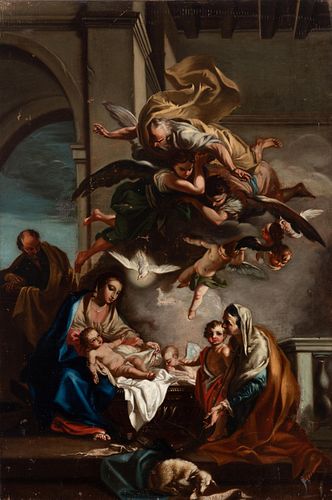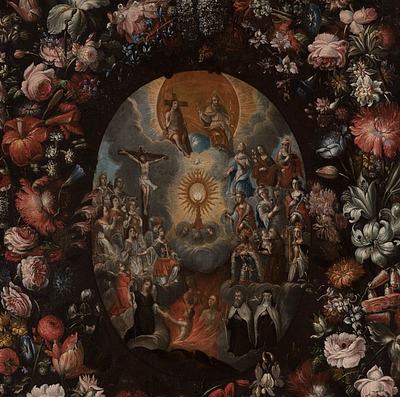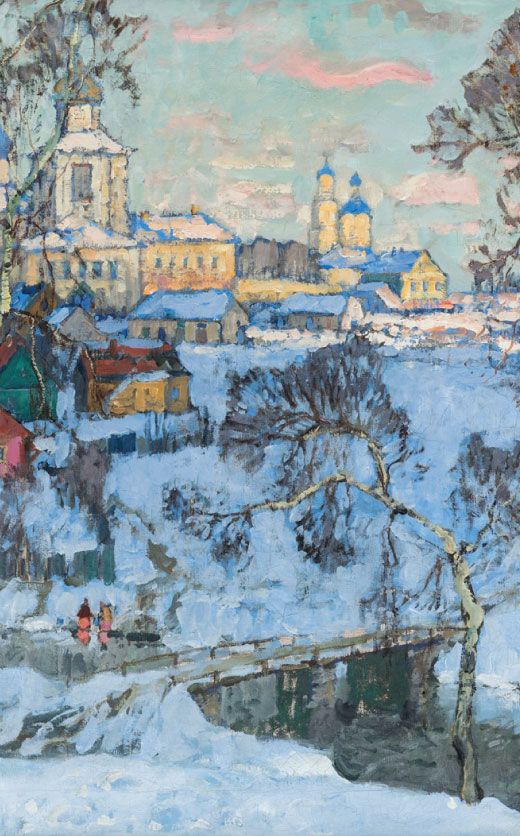School of FRANCESCO SOLIMENA; Naples, early seventeenth century. "Holy family with Elizabeth and St. John". Oil on canvas.
Lot 64
About Seller
Setdart Auction House
Carrer Aragó 346
Barcelona
Spain
Setdart Subastas was born in 2004 and is currently the first online art auction in Spain with solidity, prestige and reliability guaranteed by our more than 60,000 users. Setdart has a young, dynamic and enterprising team ready to successfully manage the purchase and sale of art works through custom...Read more
Estimate:
EUR€3,000 - EUR€4,000
$3,191.49 - $4,255.32
Absentee vs Live bid
Two ways to bid:
- Leave a max absentee bid and the platform will bid on your behalf up to your maximum bid during the live auction.
- Bid live during the auction and your bids will be submitted real-time to the auctioneer.
Bid Increments
| Price | Bid Increment |
|---|---|
| EUR€0 | EUR€10 |
| EUR€200 | EUR€25 |
| EUR€500 | EUR€50 |
| EUR€1,000 | EUR€100 |
| EUR€3,000 | EUR€200 |
| EUR€5,000 | EUR€500 |
| EUR€10,000 | EUR€1,000 |
| EUR€20,000 | EUR€2,000 |
| EUR€50,000 | EUR€5,000 |
About Auction
By Setdart Auction House
Jul 14, 2021
Set Reminder
2021-07-14 06:30:00
2021-07-14 06:30:00
America/New_York
Bidsquare
Bidsquare : OLD MASTERS
https://www.bidsquare.com/auctions/setdart-auction-house/old-masters-7202
Setdart Auction House sofia@setdart.com
Setdart Auction House sofia@setdart.com
- Lot Description
School of FRANCESCO SOLIMENA; Naples, early seventeenth century. "Holy family with Elizabeth and St. John". Oil on canvas. Presents pictorial losses and retains the original canvas. Size: 114 x 75 cm. In an interior of classic architecture, defined by a semicircular arch and balustrade, is collected the Holy Family. The scene is divided in two, showing an earthly plane, where they meet; The Virgin with the Child, Santa Isabel next to San Juanito, in the right zone, and in the left, in a second plane, the figure of San José. In the upper area is the dove representing the Holy Spirit, which is placed in the center of the composition. Above it three angels are superimposed observing the scene, it may be the representation of the archangels, St. Michael, St. Raphael and St. Gabriel. In the most common sense of the expression, the Holy Family includes the closest relatives of the Child Jesus, that is, mother and grandmother or mother and nurturing father. In both cases, whether it is St. Anne or St. Joseph who appears, it is a group of three figures. From the artistic point of view, the arrangement of this terrestrial Trinity poses the same problems and suggests the same solutions as the heavenly Trinity. However, the difficulties are fewer. It is no longer a question of a single God in three persons whose essential unity must be expressed at the same time as diversity. The three personages are united by a blood bond, certainly, but they do not constitute an indivisible block. Moreover, the three are represented in human form, while the dove of the Holy Spirit introduces into the divine Trinity a zoomorphic element difficult to amalgamate with two anthropomorphic figures. On the other hand, this iconography was traditionally, until the Counter-Reformation, a representation of the Virgin and Child to which the figure of St. Joseph was added in the foreground. It was not until the reforms of Trent when St. Joseph began to take center stage as protector and guide of the Infant Jesus. Due to its formal characteristics we can relate this work to the hand of Francesco Solimena, Italian painter of the late Baroque, main representative of the Neapolitan school of the first half of the 18th century. Francesco Solimena trained with his father, also a painter, and developed his career in Naples, where he settled in 1674. There he furthered his training with De Maria, in whose workshop he approached the most advanced baroque of Cortona, Lanfranco, Preti and Giordano. Already in his early works we can appreciate a clear affiliation to the Roman Baroque, as well as to the most recent Neapolitan pictorial tradition. Later, seeking to develop an alternative to Giordano's fanciful language, Solimena approached the more tenebrous art of Mattia Preti, insisting on greater plasticity. In this way, the shading that characterizes his figures will begin to appear in his work. Soon he will become the visible head of the Neapolitan school and, later, he will be influenced by the classicism of Maratta, which will lead him to seek a greater intensity in the drawing, with academic accents. Works by Solimena are currently held in the Prado Museum, the Hermitage in St. Petersburg, the J. Paul Getty in Los Angeles, the Kunsthistorisches in Vienna, the Louvre in Paris, the Metropolitan in New York, the National Gallery in London and the Rijksmuseum in Amsterdam, among other public and private collections around the world.
- Shipping Info
-
In-house shipping available. Please inquire at admin@setdart.com.
-
- Buyer's Premium



 EUR
EUR CAD
CAD AUD
AUD GBP
GBP MXN
MXN HKD
HKD CNY
CNY MYR
MYR SEK
SEK SGD
SGD CHF
CHF THB
THB













